The caviar of citrus: Growing finger limes is prickly business for Hill Road Orchard
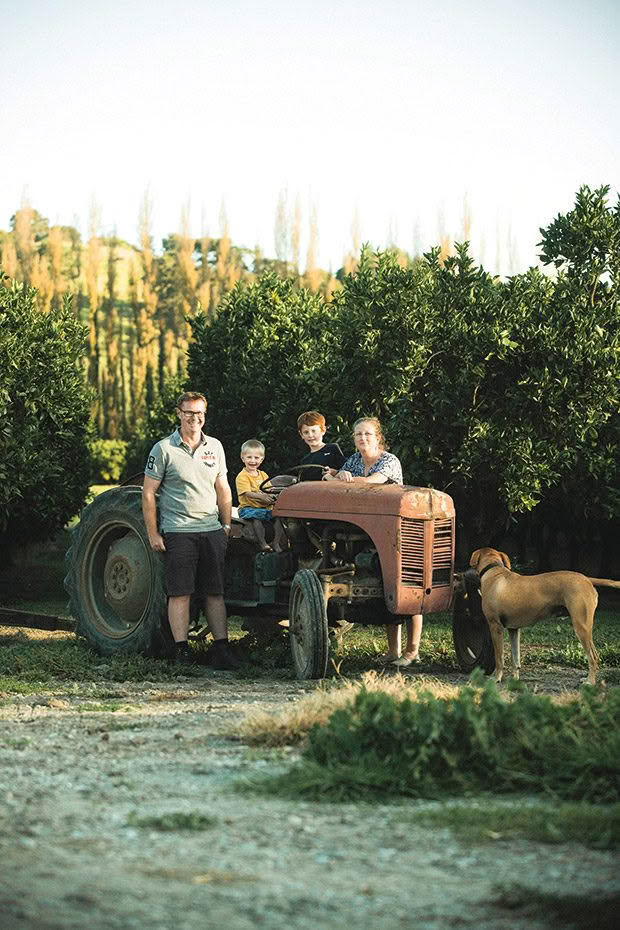
Battle-scarred but never beaten: Matt, Jack, Harry and Cath Carter.
All the limes grown by this Gisborne family have prickly personalities but that doesn’t stop them from being in great demand.
Words: Nicole Barratt Photos: Brennan Thomas
Battle wounds dot Matt and Cath Carter’s hands and arms, all marks from one prickly culprit — even leather gloves and canvas armguards can’t prevent the angry prick of a finger lime branch. But the Gisborne citrus growers say pierced skin is a small price for the tree’s fruit, the juicy pearls of which are called the caviar of the citrus world.
“They’re an Australian fruit, and like everything that originates there, it comes with a spike and a sting. The unique flavour and texture make it worth it,” says Cath.
The Carters are Gisborne’s citrus gurus. Their Ormond-based business, Hill Road Orchard, produces valencia and navel oranges year-round that are juiced on-site. Tending to their growing orchard of 70 finger lime trees with their boys (Harry, 9, and Jack, 3) is their latest prickly venture. “We’re always on the lookout for new citrus varieties. We like experimenting. Someone mentioned these funny little limes that were selling for a huge amount of money in the United States, and we got curious,” Matt says.
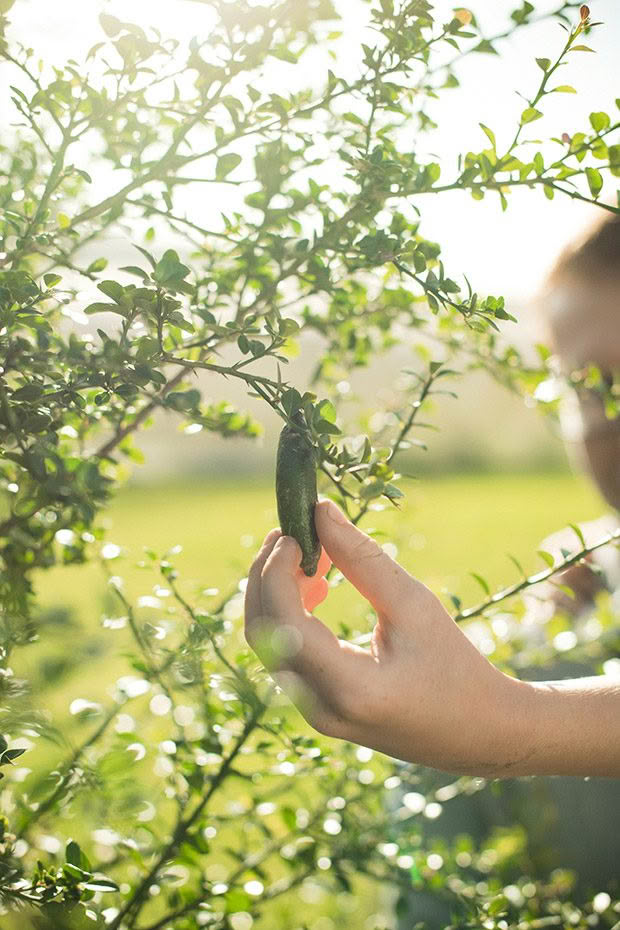
They had never tried the fruit, but the pair tracked down seven young finger lime trees in 2015 and cleared a plot, selecting the best performers over six months. Then it was off to the local plant nursery to graft more trees. “We’ve grown it from there, slowly increasing our numbers. There are 70 in the ground now, and we have a few hundred more planned for planting over the next year.”
Rather than segments, finger limes contain tiny beads of juice. “There are these perfect little pearls inside the lime, quite firm to bite. You can feel the pop in your teeth. It’s slightly different to a normal lime; it tastes more intense,” says Cath. She compares the texture to bubble tea, the Taiwanese drink with chewy tapioca balls at the bottom.
“They’re native bush tucker. They grow in tropical areas in Queensland under other plants,” Matt says. Growing in Aotearoa has come with its hurdles. “It’s not like an orange tree where you get 60 tonnes a hectare. We’re talking kilogrammes with these; the amount will differ from tree to tree. Our sun is more intense here too, so there can be issues with consistency of quality.”
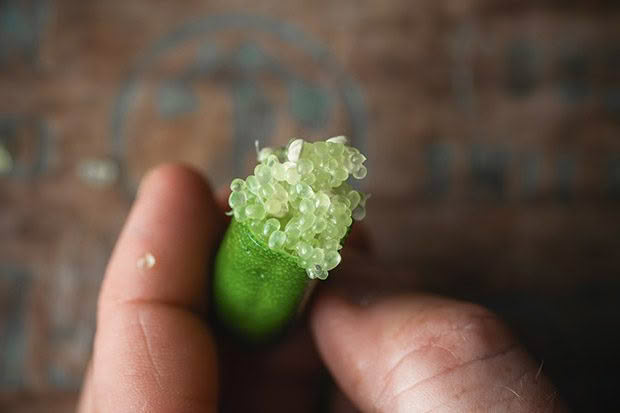
They are incredibly spiky — picking and handling the fruit is time-consuming. “Every leaf has a spike; if you leave any of the spikes in your skin, they fester away.”
Thankfully, despite their prickly personalities, finger limes are the gift that keeps giving. Their trees enjoy Ormond’s climate: summer temperatures often hit the late 30°Cs; their neighbours even have a banana plantation. The best picking season is December through early July, but the Carters’ trees continued to bear small volumes of fruit through the winter between frosts. “There was still new growth coming through in June. Obviously, no one told them it was winter,” Cath says.
“The trees produce about five to 10 kilogrammes of fruit per tree, but each finger lime tree is slightly different — they’re not homogenous. Trees right next door to each other can be ready to pick a few weeks apart. We’re aiming for a consistent supply throughout the year eventually. But we are still learning.”
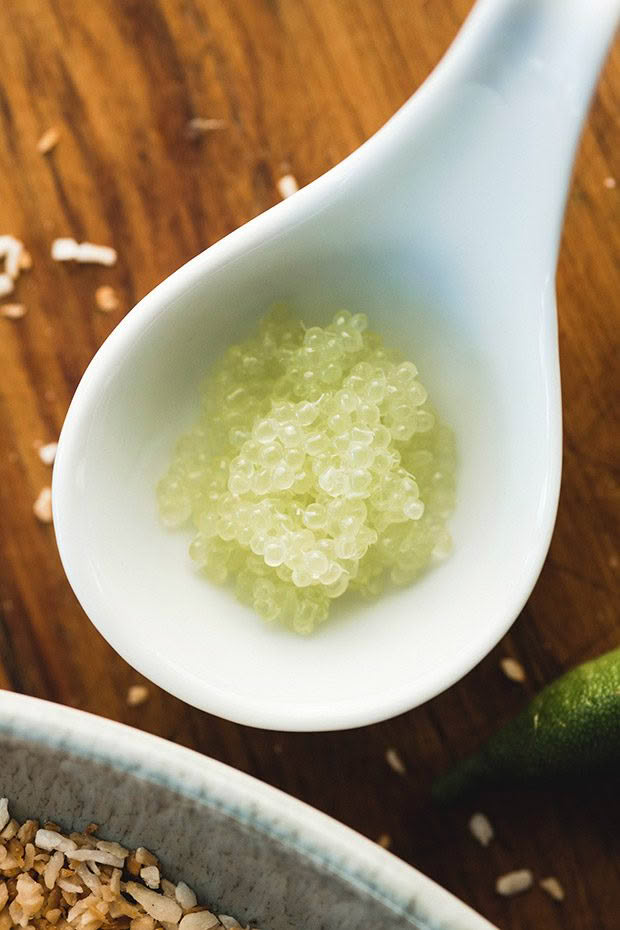
The little fruit is in demand, jetted off to their main buyers as soon as it’s picked — high-end restaurants such as Kingi and Depot in Auckland, Olive in Wellington and Rata in Queenstown. “Many of them are pairing the limes with seafood and shellfish; the chefs at Kingi were serving them with bluff oysters. Some have been making vinaigrettes with them too.”
Rata’s head chef even created a fermented finger lime yuzu kosho (a Japanese spicy paste). Matt says they attribute the demand for their product primarily to their enthusiastic restaurant buyers. “They’ve all been incredibly supportive of us and are always keen to share how they’re using the limes.”
Home chefs across the country have also been eager to get their hands on Hill Road’s finger limes. They’re snapped up quickly when listed on the company’s website in 100-gramme compostable punnets.
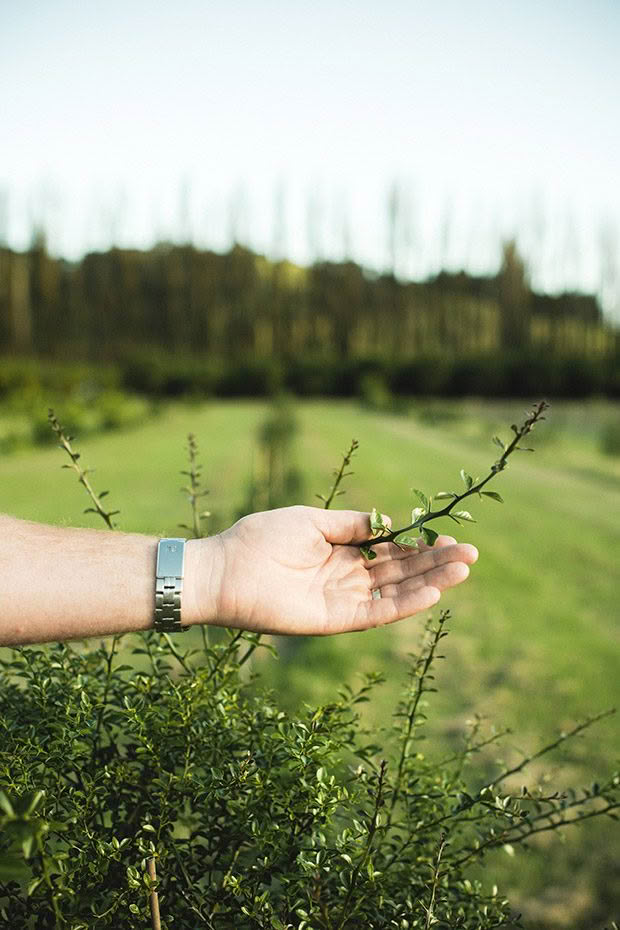
“I think we can attribute a fair amount of their popularity to MasterChef Australia — every other week, there’s a finger lime in the contestants’ mystery boxes. People get excited to try them here because they’ve never seen them,” Matt says. Cath adds that she feels the pandemic has encouraged people to experiment in the kitchen, with home cooks seeking more adventurous ingredients.
Balancing work and home life on a busy orchard can be tricky, particularly as Cath has chronic fatigue syndrome. Dizzy spells and severe tiredness can hit unexpectedly. “I can only do two to three hours at a time before feeling a bit crook, but something I recently set up our online farm shop. It was on the back burner for a while, but I’ve managed to get that going and focus on it.”
The store features Hill Road products alongside the goods of other sustainable producers in Gisborne, such as Torere Macadamias and Kai-Rawhiti Pantry chutneys. “We’ve learned how to say no to things. There are some things you can’t squeeze into a day; you can only do what you can.”
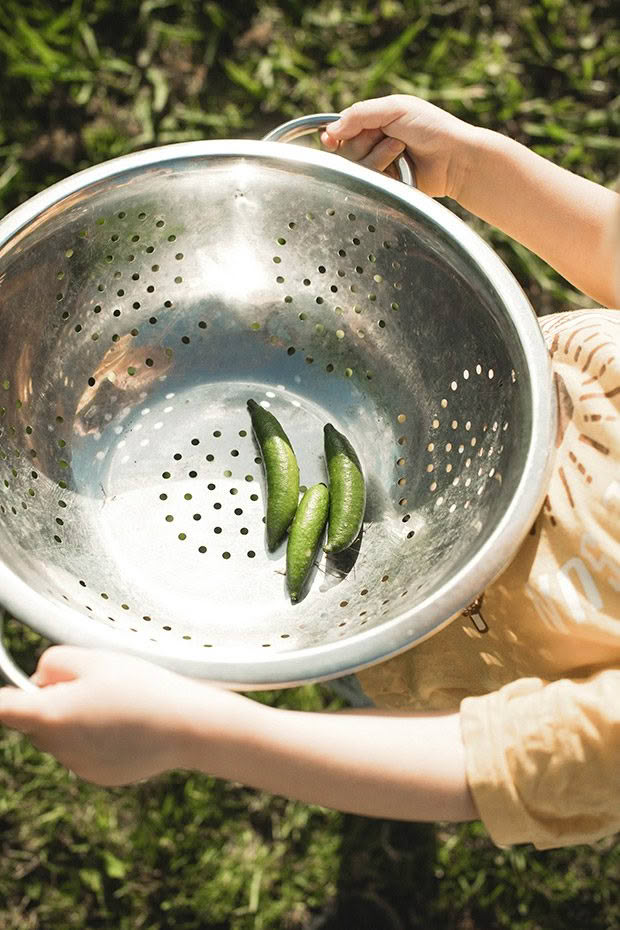
Hill Road Orchard has regularly impressed judges at the Outstanding NZ Food Producer Awards. This year, it was awarded a gold medal for its finger limes and another gold for its orange juice (which also took out the Drink Champion title). It’s the second year in a row that the pair have bagged a double-gold-medal win for both these products.
Toddler Jack can attest to the quality of fruit grown in the orchard.
“He loves going walkabout,” Matt says. “If we can’t find him, he’ll be in the finger limes — the thorns don’t seem to faze him. You have to laugh; trust him to find the most expensive crop on the property to sample.”
THE PATH TO A THRIVING ORCHARD

Matt and Cath bought their Ormond orchard in 2010. At the time, it was a neglected citrus operation in desperate need of care. “The words ‘bulldozer’, ‘digger’ and ‘bonfire’ were among those mentioned to us when we first moved in,” says Cath. Trees were covered in ivy so thick a tractor could barely get through the orchard.
“The trees had sooty mould, which is basically black stuff on the leaves and fruit. They were almost starting to die, and we had to whip them back into shape.”
Unable to afford to replant the property, the pair decided to restore the trees — an eight-year job. They gave the trees haircuts with a chainsaw, then cut them back and pruned them. This was while working full-time jobs — Matt, a technical manager for a produce company, and Cath, an agronomist. They’ve farmed sustainably since the beginning, using minimal fertilizer to protect beneficial insects. Fantails, bellbirds and tūī are regular visitors to the orchard.
Hill Road Orchard’s Finger Lime Tart

Serves 8-10
INGREDIENTS
For the base:
½ cup of Torere Macadamia Butter (available at hillroadorchard.co.nz)
3 tablespoons coconut cream
1 small free-range egg
1½ cups gluten-free flour
1/3 cup icing sugar
For the filling:
4 finger limes
¾ cup lime juice
¾ cup castor sugar
1 teaspoon cornflour
¾ cup coconut cream
4 free-range eggs
To garnish:
1 finger lime
desiccated coconut, toasted
METHOD
Preheat the oven to 190°C. Grease a 24cm round loose-bottomed cake tin or tart pan.
To make the base, quickly combine the nut butter, coconut cream (choose a coconut cream without stabilizers — you want the thick, creamy layer rather than the thin, clear layer), egg, flour and icing sugar — do not over mix.
Roll into a ball, wrap in plastic wrap and chill for 10 minutes. Once chilled and firm, remove and gently press into an even layer in the base of the tart pan. Cover and chill for a further 10 minutes. Once firm, blind bake for about 5 minutes.
To prepare the finger limes for the filling, cut the fruit in half and squeeze gently from the tip to remove the pearls.
To remove any seeds, put the pearls and seeds in the lime juice and use a small sieve to skim off the seeds. Then put in a bowl or jug with the lime juice, ready to add to other filling ingredients.
To make the filling, whisk the sugar, cornflour and coconut cream together (again only use the creamy layer). Add the eggs one at a time, then add the lime juice/finger lime pearls and stir through.
Carefully pour into the pastry case and bake for about 20 minutes until the filling is set. Leave to cool and garnish with finger lime pearls and toasted coconut.
Love this story? Subscribe now!
 This article first appeared in NZ Life & Leisure Magazine.
This article first appeared in NZ Life & Leisure Magazine.
